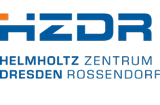X-ray Laboratory
The X-ray laboratory at the HZDR (Institute of Ion Beam Physics and Materials Research) operates two different laboratory diffractometers.
They are optimized to cover a wide range of tasks in materials research. Both units operate with Cu radiation (Kα: 0.154 nm / 8.04 keV).
|
X-ray diffractometer D8 with vertical theta-theta goniometer and secondary monochromator Source: Dr. Ganss, Fabian |
X-ray diffractometer Empyrean with vertical theta-theta goniometer, X-ray source with monochromator (left), area detector (right top) and proportional counter (right bottom) Source: Dr. Ganss, Fabian |
equipment: |
|||
|
Θ-Θ powder diffractometer |
D8 (Bruker) |
diffraction on powders and polycrystalline materials |
Bragg-Brentano geometry using a graphite secondary monochromator and a scintillator |
|
Θ-Θ 4-circle diffractometer |
Empyrean (Panalytical) |
thin film analytics, diffraction, reflectivity, orientational and texture investigations, reciprocal space maps |
parallel beam optics with germanium monochromator, proportional counter and area detector |
Topics of Research
The development of new high-performance materials, new materials for micro- and nano-technology requires a constantly evolving analytics, in particular to clarify the relationship between the atomic microstructure and the practice-relevant macroscopic material properties. The aim is by means of material science to achieve a targeted design of materials with specific properties. Structural studies are the key to establish a connection between the functional and structural properties which generate this function. This knowledge makes it possible to design new materials with precisely defined characteristics. Thin nanostructured layers can, for example, affect surface and interfacial properties such that the material properties of conventional materials can be adjusted to match a particular task. The function of the nanostructures is not only determined by their internal structure, but in large part by their morphology and surface characteristics.
Crystallisation and phase analysis
The atomic structure, particularly the formation of (nano-) crystallites, which evolves during a deposition process, during modification with ion beams or in connection with subsequent annealing steps, decisively influence the material properties. For materials undergoing only structural changes at a thin surface layer, the method of the grazing (or glancing) incidence diffraction is used. By varying the angle of incidence, the sensitivity in terms of a thin surface layer can be greatly improved.
These studies relate to various topics such as light metal materials, materials for biomedical applications, metallic layers, semiconductor nanoclusters, metal-ceramic interfaces, transparent oxides, etc. In addition to the phase formation as a function of the different technological steps also the development of the crystallite size, the change of the lattice constants as well as their statistical distribution function can be studied. As appropriate for thin films and possible texture effects are investigated. The objective is, for example, to observe or to keep track of orientation relationships between substrate and a deposited layer.
X-ray reflectometry
With X-ray reflectometry one gains information to the layer thicknesses, the surface and interface roughness and the density of the materials. The method is applied, for example, to study the ion beam mixing in Co/Cu multilayers, the change of the density in SiC after implantation or to assess the quality of BN layers from an IBAD process. The quality of the semiconductor substrate surfaces or of hetero-structure interfaces can be as wellas investigated.
High Resolution Diffractometry
The triple-axis diffractometer is primarily used to study smallest lattice strains, e.g., after ion implantation into Si, ZrO, or in III-V semiconductor heterostructures and their relaxation after some treatment.
Powder Diffraction
This method is the default method for phase identification mainly of polycrystalline materials. The investigation of crystalline and semi-crystalline powder-like materials goes in many cases back to topics of the Institute of Resource Ecology (uranyl complexes, geological samples, ...).
- Tutorial: Diffraction for thin films and Reflectometry

